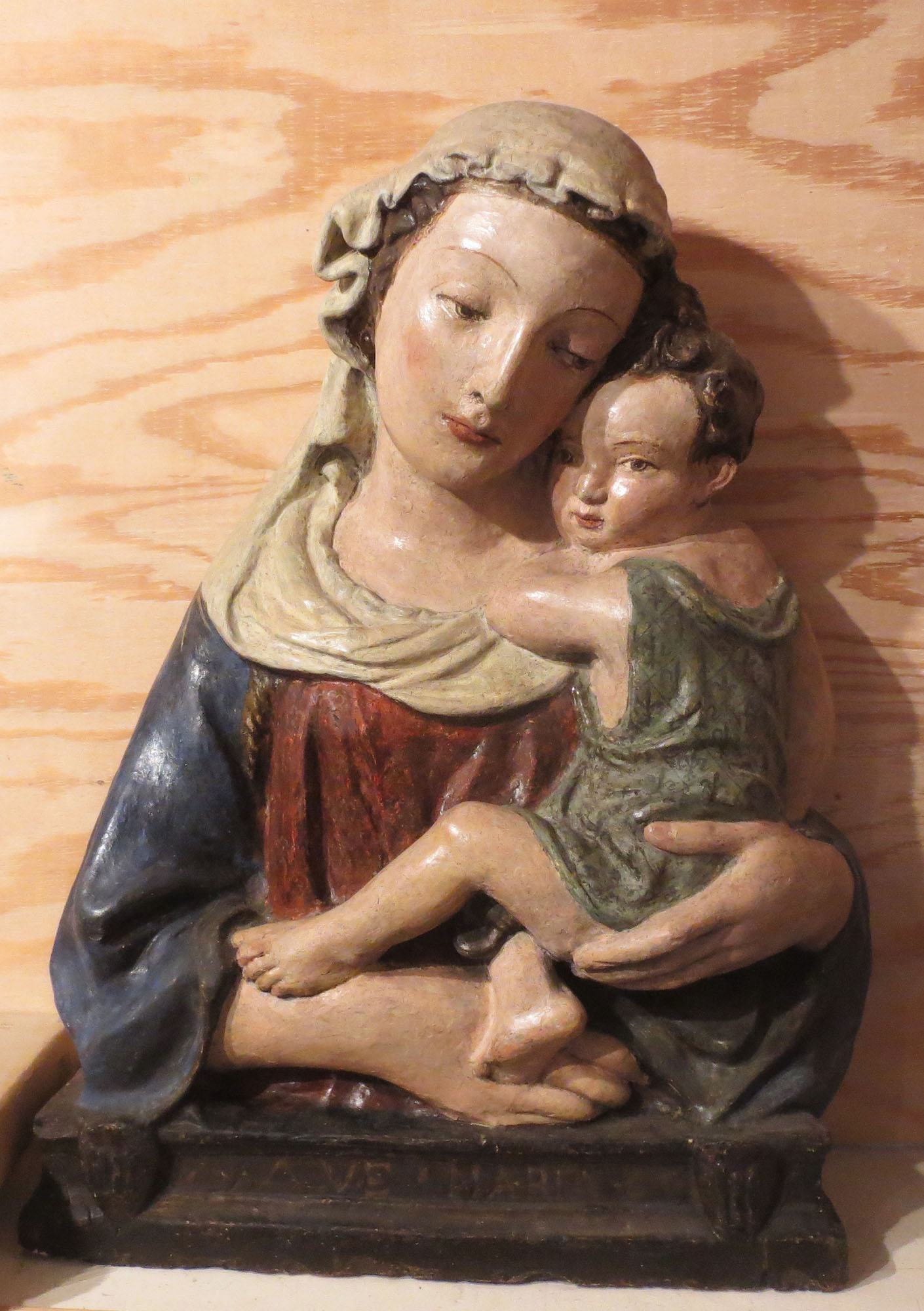Well preserved with much original polychrome, some restoration. From David R. Abate estate; private collection.
After a design credited to Ghiberti, this type of brightly painted Madonna and Child in various miscible materials was quite popular in quattrocento Florence as votives for niches in domestic or ancillary family chapels. Earlier opinions about the nature and authorship of these statues up to Krautheimer’s fundamental monograph are summarized by John Pope-Hennessy, Catalogue of the Italian Sculpture in the Victoria and Albert Museum, London, 1964, vol. I, no. 52, pp. 59-61, citing important related works in museums and major private collections.
In an inclusive entry by C. D. Lewis on a related Madonna and Child in the Mount Holyoke College Art Museum, five basic types are codified by variants of pose, coif and base ornament done during the second quarter of the century under Ghiberti’s probable aegis. (Cf. Lewis in Jean C. Harris, The Mount Holyoke College Art Museum Handbook, South Hadley, 1984, pp.22-23.) See too Ulrich Middeldorf, “A Renaissance Madonna Relief” in the Register of the Museum of Art of the University of Kansas, vol. v, 1955, pp. 4-7; reprinted in Ulrich Middeldorf, Raccolta di Scritti that is Collected Writings, Florence, 1980, vol. II, pp. 179-182, for a variant with slightly differing positions of hands and feet but with similarly crimped coif and same base design, which in many ways also resembles a superb version once owned by Abate, and later with Tomasso Brothers in London. The main variants in secondary aspects of these statues help track evolutionary changes in the model from the original Ghibertian prototype. As such, the specifics of this statue indicate a probable origin during the 1440s.

